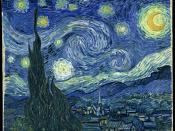Bipolar I Disorder is the sixth leading cause of disability in the developed world for ages 15-44. Bipolar disorder affects at least two million Americans a day. Bipolar is also known as manic depression. Bipolar is a life long disease in which some of the symptoms A person with bipolar disorder may experience are mania, which is usually episodic with an elevation of mood and increased energy and activity and severe depression. In children, mania is commonly chronic rather than episodic, and usually is shown in mixed states with irritability, anxiety and depression. In adults and children, during depression there is lowering of mood and decreased energy and activity. During a mixed episode both mania and depression can occur on the same day. There are Alternating periods of extreme moods. The severity of their moods can differ from person to person. A person with bipolar disorder may seem to have a high level of energy, irritability, excessive moodiness, impulsive or reckless behavior.
A study in the American Journal of Psychiatry reported "in those with bipolar disorder, two major areas of the brain contain 30 percent more cells that send signals to other brain cells." This report theorizes that "the extra signal-sending cells may lead to a kind of over stimulation".(1) When we consider the biological issues with bipolar disorder, studies have found that "first-degree relatives parents, children, siblings are more likely to have this disorder than the relatives of those who do not have bipolar disorder" (3).
When researching bipolar disorder I found that several studies hypothesize that a "low or high level of a specific neurotransmitter such as serotonin, norepinephrine or dopamine is the cause of bipolar disorder"(2). Others indicate that an imbalance of these substances could be the problem. Some studies have found evidence that a change in...


